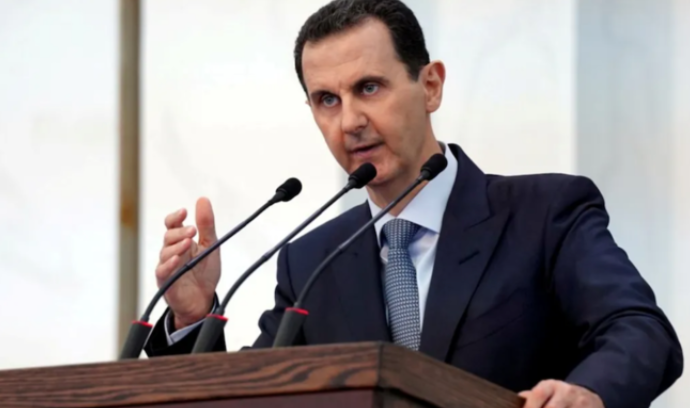
- ARAB NEWS
- 06 Jul 2025

One of the core policies of the Iranian regime is turning other countries, more specifically Arab nations, into proxy battlegrounds in order to advance its political interests and hegemonic ambitions in the region. The regime appears to have mastered asymmetrical warfare, which is a major source of instability in the Middle East.
For example, after an Israeli airstrike this month killed two Islamic Revolutionary Guard Corps officers in Syria, the Iranian government promised to take revenge, further escalating tensions in the region. One of the tactics of the theocratic establishment is exploiting chaos and conflicts in other nations. It is worth noting that Iranian leaders across the political spectrum — including the moderates, hard-liners and Principlists — appear to call for the same foreign policy objectives in Syria, which are most likely directed by Supreme Leader Ali Khamenei, the senior cadre of the IRGC and the Quds Force, an elite branch of the IRGC that conducts operations in foreign nations to advance the regime’s revolutionary and ideological principles.
Other countries should learn an important lesson from how Iran turned Syria into a proxy battleground. It took many years of planning for the Iranian regime to exert significant influence in Syria and turn the Arab nation into a warzone. When the Syrian conflict erupted in 2011, the Islamic Republic started its interference by providing advisory assistance and moral support to the regime. Then, when the chaos escalated and the Syrian forces showed weakness, losing several major battles and territory to the opposition and rebel groups, Iran further increased its involvement. Under the instruction of Khamenei, Tehran began providing military, intelligence and economic assistance to President Bashar Assad.
The Iranian regime moved to the next level, with the IRGC dispatching low-level soldiers as well as senior military generals to Syria. In addition, Iran used its proxies, including Hezbollah and Shiite militias from across the region, while also recruiting fighters from countries such as Afghanistan to fight alongside Assad’s forces. More importantly, the Iranian regime exploited the conflict financially by making Damascus more economically dependent on it. It opened a credit line for the Assad regime and continued to extend it. The Tehran regime spent as much as $16 billion a year supporting Assad. Through these Machiavellian strategies, the ruling mullahs deeply infiltrated Syria’s political, military and security structures.
But this was not all. The Islamic Republic also began changing the demographics, for instance by repopulating some areas with Shiite families from Hezbollah and other militia groups in an attempt to consolidate its influence in Syria for the long term, as well as to bolster Assad’s rule.
It took many years of planning for the Iranian regime to exert significant influence in Syria and turn it into a warzone.
Dr. Majid Rafizadeh
Ideologically speaking, the Iranian regime can more forcefully and easily export its revolutionary principles through soft power. The Islamic Azad University of Iran has, for example, opened new branches in Syria, while Tehran has built Shiite mosques and invested in expanding Shiite shrines across its near neighbor’s lands.
Strategically and geopolitically speaking, the Iranian regime strengthened its coalition of Shiite forces and militias, some of which invaded Syria from Iraq, Pakistan, Afghanistan and Lebanon. Many of these militias have already become the bedrock of Syria’s sociopolitical and socioeconomic infrastructure. By having military bases and personnel in Syria, it also became less costly for Tehran to manufacture and export weapons to its nearby proxies, such as Hezbollah in Lebanon.
By exploiting instability in Syria, Iran’s IRGC and Quds Force now enjoy a military presence close to the border of a major rival — Israel. The IRGC has also established permanent military bases in Syria and has significant control over some of the country’s airports. From the Iranian leaders’ perspective, this helps tip the regional balance of power in their favor.
The Iranian regime also set up factories that are involved in manufacturing advanced ballistic missiles and other weapons in Syria. These include precision-guided missiles with the technology to strike specific targets. Iran’s foreign-based weapons factories give it an advantageous military capability for waging wars or striking other nations through third countries such as Syria.
Tehran can also employ its militia groups in Syria to target Israel. As an Iranian military adviser stated in 2013: “This front is supported by Hezbollah. The fighters are Iranians, Hezbollah, the Iraqi and Afghan Mujahideen, and others.” When questioned, he declared that they are on the side of good because they follow the orders of Khamenei.
Other countries should take heed of how the Iranian regime exploited instability in Syria and turned the Arab nation into a perpetual proxy battleground.